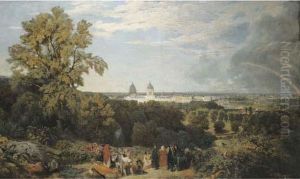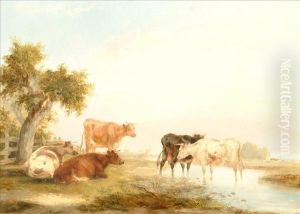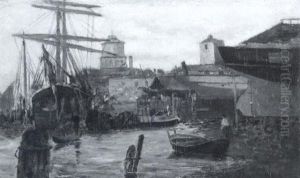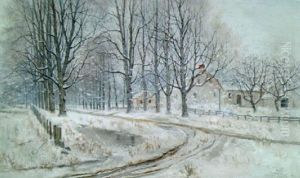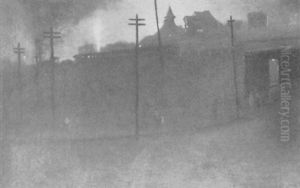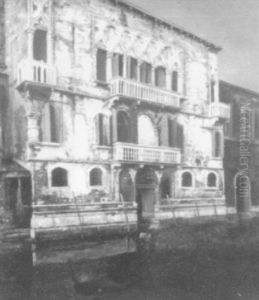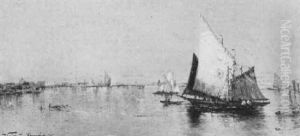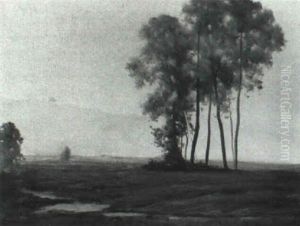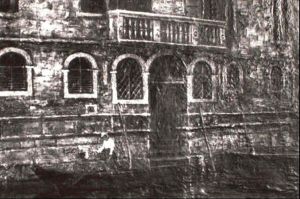Willis A. Adams Paintings
Willis Seaver Adams was an American painter born on April 24, 1844, in Malden, Massachusetts. He was part of the second generation of artists influenced by the Barbizon school, a group of painters from the Barbizon village in France who focused on realism and nature. Adams is best known for his landscapes and rural scenes, which often featured the serene and pastoral settings of the American countryside.
Adams studied art under the tutelage of Alexander Ransom, which allowed him to develop his skills and techniques. His early work reflected the Hudson River School style, which was characterized by its romantic portrayal of the American landscape. However, as his style evolved, Adams began to incorporate the tonalist approach that was becoming popular among American artists of the time. This style emphasized mood and atmosphere, often through the use of a limited color palette.
Throughout his career, Willis Adams remained devoted to painting the American landscape. He captured the changing seasons, the tranquility of rural life, and the beauty of the natural world with a quiet sensitivity. His works were exhibited at various institutions, including the Boston Art Club and the Pennsylvania Academy of the Fine Arts. Despite not achieving the same level of fame as some of his contemporaries, Adams’s work was well-respected among art critics and collectors during his lifetime.
Adams continued to paint until his death on August 15, 1921. His paintings are now part of the collections of several museums and have been featured in exhibitions dedicated to American tonalist and landscape painters. Adams's legacy is that of a dedicated and skilled artist who contributed to the rich tradition of American landscape painting.
